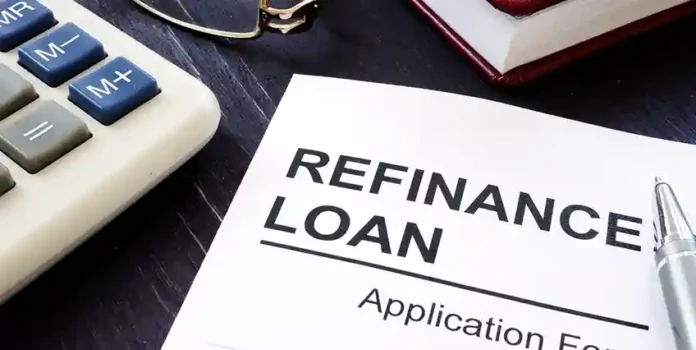Refinancing with bad credit in 2025 is more achievable than many homeowners think. Even with a low credit score, borrowers can still access programs and lenders designed to help them secure better loan terms or lower interest rates. Understanding your options in today’s lending environment is crucial to making smart financial decisions.
KEY POINTS SUMMARY
- Refinancing with bad credit is possible through government-backed and specialized lender programs.
- FHA and VA loans remain accessible for borrowers with low credit scores.
- FHA Streamline Refinance simplifies the process for existing FHA loan holders.
- RefiNow program allows refinancing with little to no credit score requirements.
- Cash-out refinancing is an option, but comes with risks that must be considered.
UNDERSTANDING REFINANCING WITH BAD CREDIT
Refinancing replaces your existing loan with a new one, often to reduce interest rates, lower monthly payments, or change loan terms. While bad credit can limit options, it doesn’t make refinancing impossible. Several key factors affect eligibility:
- Credit score: Lenders often have minimum thresholds but programs exist that bypass strict requirements.
- Income and debt ratio: Demonstrating steady income can improve chances, even with low credit.
- Home equity: Higher equity increases your refinancing options.
- Loan type: Certain loans are more flexible for low-credit borrowers.
By understanding these elements, borrowers can strategically approach refinancing, even with credit challenges.
GOVERNMENT-BACKED PROGRAMS: A HELPING HAND
FHA LOANS
FHA loans remain a primary option for borrowers with bad credit. Insured by the Federal Housing Administration, these loans allow:
- Lower credit score requirements
- Smaller down payments
- Flexible debt-to-income ratio consideration
VA LOANS
Veterans and active-duty service members can benefit from VA loans. Key features include:
- No down payment requirement
- No private mortgage insurance (PMI)
- Lenient credit requirements compared to conventional loans
USDA LOANS
The USDA provides loans for rural and suburban buyers who meet income criteria. Advantages include:
- Reduced or zero down payment
- Competitive interest rates
- Accessibility for those with lower credit scores
These programs create opportunities for refinancing that might not otherwise exist for low-credit borrowers.
SPECIALIZED REFINANCING PROGRAMS
FHA STREAMLINE REFINANCE
For existing FHA loan holders, the FHA Streamline Refinance simplifies the refinancing process:
- Minimal documentation required
- Potentially lower credit score thresholds
- Faster approval process
This program is ideal for borrowers looking to reduce monthly payments without undergoing a full underwriting process.
REFINOW PROGRAM
The RefiNow program, launched by Fannie Mae, specifically targets homeowners with low credit scores or limited income:
- No minimum credit score requirement
- Streamlined paperwork
- Helps borrowers access lower interest rates and manageable payments
These programs provide realistic avenues for refinancing even under challenging credit circumstances.
ALTERNATIVE LENDERS AND OPTIONS
Private and alternative lenders increasingly cater to borrowers with bad credit. Key points to consider:
- Interest rates may be higher than traditional banks
- Lenders may require additional verification of income
- Flexibility in loan terms can make refinancing feasible
Cash-Out Refinancing
Borrowers with home equity may consider cash-out refinancing to access funds. Key considerations include:
- Increases overall debt
- Potentially higher interest rates
- Must weigh benefits against financial risk
By carefully evaluating lenders and loan options, even borrowers with poor credit can find solutions that fit their needs.
RISKS AND CONSIDERATIONS
Refinancing is not without risk, especially with bad credit:
- Higher interest rates can offset any monthly savings
- Increased debt may create financial strain, particularly with cash-out options
- Fees and closing costs can reduce the net benefit
Borrowers should calculate total costs, compare rates, and ensure refinancing truly improves their financial situation.
STRATEGIES TO IMPROVE REFINANCE SUCCESS
Even small steps can enhance refinancing potential:
- Check credit reports for errors and dispute inaccuracies
- Reduce outstanding debts to improve debt-to-income ratio
- Maintain steady income and avoid major financial changes before refinancing
- Shop around to compare offers from multiple lenders
These strategies can help secure the best terms even with less-than-perfect credit.
CONCLUSION
Refinancing with bad credit in 2025 is realistic with the right approach. Borrowers can leverage government-backed programs, specialized lenders, and strategic planning to improve loan terms and potentially save money. Carefully assessing risks, preparing documentation, and exploring all available options are critical steps.
Take control of your refinancing journey today and explore which program fits your financial goals. Share your experiences or questions in the comments below to stay connected with others navigating the same path.
FAQ
Q1: Can I refinance if my credit score is below 600?
Yes, programs like FHA Streamline and RefiNow allow refinancing for borrowers with credit scores below traditional thresholds.
Q2: Will refinancing with bad credit increase my monthly payment?
It depends on the loan terms and interest rates. Carefully review offers and consider total costs before proceeding.
Q3: Are there refinancing programs without a credit score requirement?
Yes, programs such as RefiNow are designed to accommodate borrowers with limited or poor credit histories.
Disclaimer: The information provided is for general educational purposes only and should not replace professional financial advice. Evaluate your personal situation before refinancing.
